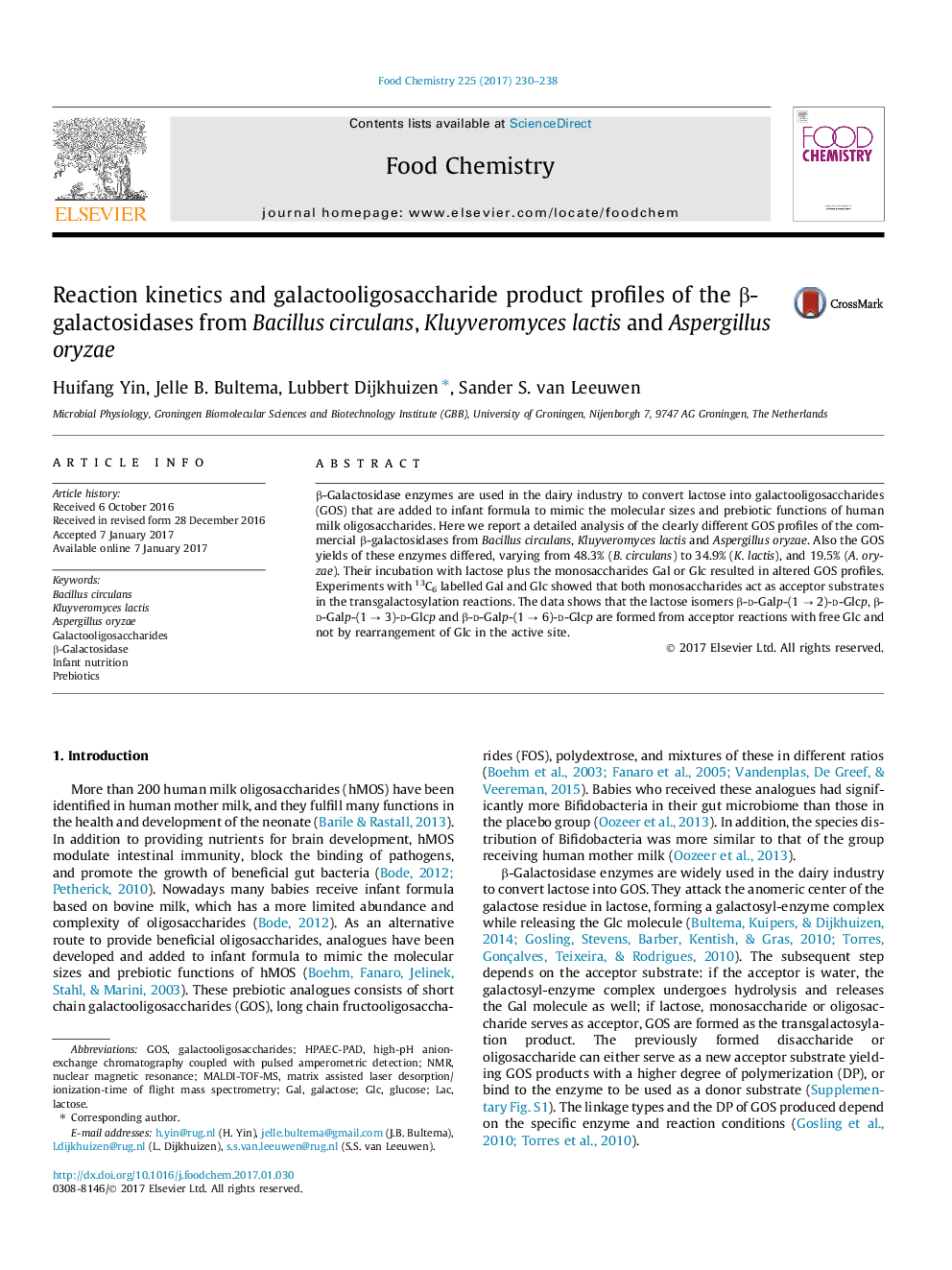| Article ID | Journal | Published Year | Pages | File Type |
|---|---|---|---|---|
| 5133920 | Food Chemistry | 2017 | 9 Pages |
â¢GOS biosynthesis routes were mapped for 3 commercial β-galactosidase enzymes.â¢Lactose isomer synthesis is based on the acceptor reaction with Glc.â¢Addition of Gal or Glc changed the GOS profiles.â¢Î²-Galactosidase from Bacillus circulans has a relatively high GOS yield and product complexity.
β-Galactosidase enzymes are used in the dairy industry to convert lactose into galactooligosaccharides (GOS) that are added to infant formula to mimic the molecular sizes and prebiotic functions of human milk oligosaccharides. Here we report a detailed analysis of the clearly different GOS profiles of the commercial β-galactosidases from Bacillus circulans, Kluyveromyces lactis and Aspergillus oryzae. Also the GOS yields of these enzymes differed, varying from 48.3% (B. circulans) to 34.9% (K. lactis), and 19.5% (A. oryzae). Their incubation with lactose plus the monosaccharides Gal or Glc resulted in altered GOS profiles. Experiments with 13C6 labelled Gal and Glc showed that both monosaccharides act as acceptor substrates in the transgalactosylation reactions. The data shows that the lactose isomers β-d-Galp-(1 â 2)-d-Glcp, β-d-Galp-(1 â 3)-d-Glcp and β-d-Galp-(1 â 6)-d-Glcp are formed from acceptor reactions with free Glc and not by rearrangement of Glc in the active site.
